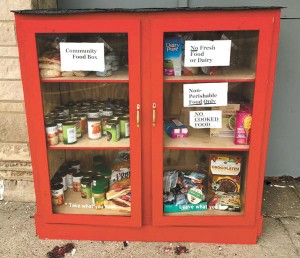The Indy Hunger Network, a nonprofit dedicated to studying food insecurity and measures to stop it, in Marion County, recently released a report on the effect of the pandemic on hunger in the city. A survey taken in February 2020, before COVID-19 hit the state, indicated the meal gap was 380,000 meals per month. In June, during the first wave of COVID-19 infections and lockdowns in the city, the gap had widened to 740,000 per month. A “meal gap” is the measurement of the food budget shortfall into a number of meals for a household. About 45 percent of food-insecure household include at least one child. African-Americans where 50 percent more likely to be impacted by hunger, and nearly half of the respondents to the survey said they didn’t have enough food to prepare healthy meals at home.
To combat the growing problem, the City of Indianapolis passed Proposal 337 on Jan. 11 which establishes a new Division of Community Nutrition and Food Policy, the Indianapolis Community Food Access Coalition, and the Indianapolis Food Access Advisory Commission.
The new programs will give a higher profile to food access issues in the city, especially in food deserts such as the far eastside where supermarkets have closed and residents without cars find it challenging to get fresh food. It will also help the city collect data in order to provide services to those most in need.
While the need continues to grow, resources to help with hunger have also grown. A few years ago, free food boxes began to pop up in distressed neighborhoods, and recently, more boxes have been added, including a food box at 10th and Arlington in front of the Ace Hardware. Other food boxes on the east and near eastside have seen steadily increasing donations since the pandemic began, as well as increased usage.
If you would like to donate to food boxes, please do not put perishables (dairy, fresh fruit and vegetables), items in glass jars or bottles, or in cans without a pull tab. Items placed in these boxes in winter will freeze, making a mess in the boxes. Ideal items include granola bars, peanut butter, canned meats and tuna, crackers, mixes that only require water, protein bars, dry beans, and rice.
In addition, food pantries such as the operations at Gaia Works, Downey Ave. Christian Church, the Sharing Place in Lawrence, and many others are seeing increased demand and fewer volunteers. Food box giveaways have been organized by Eskenazi Health, Gleaners Food Bank, and other organizations throughout the area. Funds for these major outreach programs come from a number of private and government sources, including the Coronovirus Food Assistance Program administered by the federal government.
The Community Compass app offered by the city includes help to find free food, hot meals, and connect with other food assistance programs. If you have a smart phone, look for it in your app store — it is compatible with Apple and Android devices. If you don’t have a smart phone, text “hi” to 317-434-3758
Many organizations are also finding themselves short-handed. Relying on volunteers for the most part, organizations are looking for able-bodied individuals who can help distribute, pack box boxes, and provide transportation. To help at Gleaners, visit gleaners.org/volunteer. Irvington Community Advocacy Network (ICAN) provides help of all kinds to residents on the east side; visit their Facebook page or call 317-322-9645 to see how you can help.



